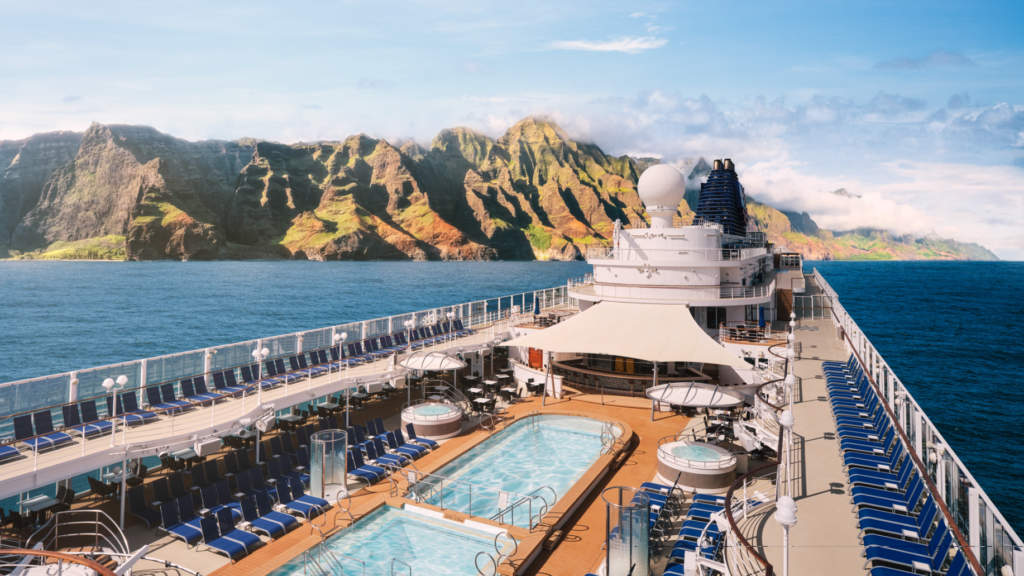The global travel industry faced unprecedented challenges during the pandemic, with restrictions bringing operations to a near standstill. However, as the world begins to emerge from these constraints, the return of cruise tourism marks a significant milestone in the revival of global and local tourism economies. This resurgence is not just a boon for travelers eager to explore the world again but also a crucial driver for the economic recovery of destinations worldwide. This article explores how the revitalization of the cruise industry is contributing to the rejuvenation of local economies, focusing on the symbiotic relationship between cruise tourism and regional development.
The Economic Impact of Cruise Tourism
Cruise tourism is a significant contributor to the global travel economy, providing a multifaceted economic boost to ports of call and surrounding regions. When a cruise ship docks, it brings not only passengers eager to explore local attractions but also a surge in demand for local goods and services. From tour operators and restaurants to local artisans and retailers, a wide range of businesses benefit from the influx of tourists. Moreover, cruise lines often procure supplies from local vendors, further injecting capital into the region’s economy.
Job Creation and Sustenance
The ripple effect of cruise tourism extends to job creation and sustenance. Employment opportunities arise in direct services such as hospitality and transportation, as well as in indirect services including supply chains and infrastructure development. These jobs are vital for local communities, providing income and stability for many families.
Sustainability and Collaboration
As cruise tourism returns, there’s a growing emphasis on sustainable practices and community collaboration. Cruise lines and destinations are increasingly working together to ensure that tourism benefits local economies while minimizing environmental impacts. Sustainable tourism initiatives, such as responsible waste management, conservation efforts, and support for local culture and heritage, are becoming integral to cruise operations. This collaborative approach ensures that the benefits of tourism are long-lasting and shared widely within the community.
Case Studies of Economic Revival
The Mediterranean: A Model of Recovery
The Mediterranean region, a favorite among cruise passengers, offers insight into the economic revival powered by cruise tourism. Ports in countries like Greece, Italy, and Spain have seen a significant uptick in economic activity as cruises return. Local businesses, from wineries to craft shops, have welcomed the boost in visitors, with many relying on cruise passengers as a primary customer base.
The Caribbean: Harnessing Cruise Tourism for Recovery
The Caribbean islands, heavily dependent on tourism, have embraced the return of cruises as a critical step toward economic recovery. Efforts to enhance port facilities and tourist attractions are in full swing, aiming to attract more ships and visitors. The region’s focus on cultural and eco-tourism experiences offers cruise passengers unique opportunities to engage with local communities and natural environments, driving economic benefits beyond the port cities. Tourists love to take an Ecuador holiday tour that combines coastal charm with inland adventures like rainforest hikes and cultural visits. These tours often extend the cruise experience by offering a deeper understanding of the country’s heritage and biodiversity.
The Role of Iconic Routes in Tourism Revival
An Alaska Cruise from Vancouver: A Case in Point
An excellent example of how specific cruise routes can contribute to local economies is an Alaska cruise from Vancouver. This iconic journey not only benefits Vancouver’s economy as a starting point but also supports various ports along the Alaskan coast. These cruises offer passengers breathtaking natural beauty and wildlife experiences, driving interest and demand for Alaskan tourism. The economic impact extends through the region, from Vancouver to small Alaskan communities, showcasing the profound effect that well-chosen cruise routes can have on local economies.
Conclusion
The return of cruise tourism heralds a promising era for global and local economies alike. As the industry resumes operations, its contribution to economic revitalization becomes increasingly evident, from bustling port cities to serene coastal towns. The focus on sustainability and community collaboration ensures that this resurgence is not just a short-term boost but a foundation for long-lasting economic and environmental well-being. As travelers once again set sail on journeys like the Alaska cruise from Vancouver, they participate in a larger story of recovery, exploration, and mutual benefit, highlighting the enduring spirit of discovery and resilience of communities around the globe.






